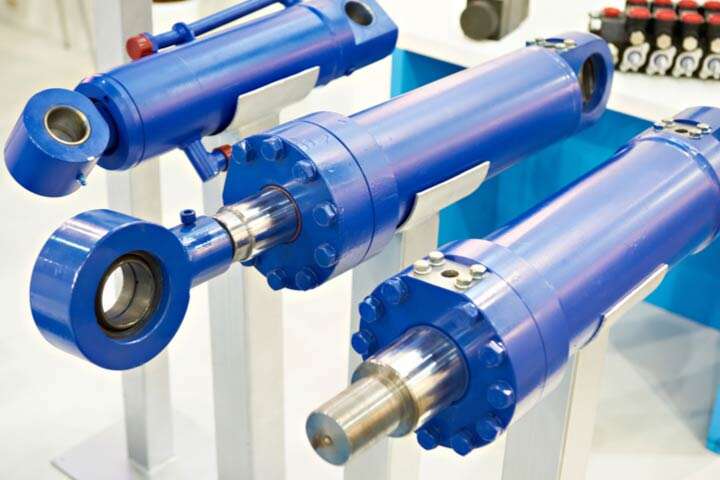How to Repair Hydraulic Cylinders

Hydraulic cylinders are indispensable components in various industrial and mechanical systems, serving critical functions in machinery ranging from construction equipment to manufacturing plants. However, like any mechanical device, hydraulic cylinders are prone to wear and tear over time, leading to leaks, reduced efficiency, and ultimately, operational failures. Understanding how to repair hydraulic cylinders is essential for ensuring optimal performance and extending their lifespan. In this comprehensive guide, we delve into the intricacies of hydraulic cylinder repair, providing step-by-step instructions, practical tips, and expert insights to empower you to tackle maintenance tasks effectively.
Understanding Hydraulic Cylinders
Before delving into the repair process, it’s crucial to grasp the fundamental principles of hydraulic cylinders. These devices utilize the power of hydraulic fluid to generate linear motion, converting hydraulic energy into mechanical force. Typically composed of a cylindrical barrel, piston, rod, seals, and hydraulic fluid, hydraulic cylinders operate under high pressure to perform tasks such as lifting, pushing, and pulling heavy loads.
Identifying Common Issues
The first step in repairing hydraulic cylinders is identifying the underlying issues. Common problems include fluid leaks, scoring or corrosion on cylinder surfaces, damaged seals, bent rods, and piston wear. Conducting a thorough inspection and diagnosing the specific issues will guide the repair process and ensure targeted solutions.
Tools and Equipment
Repairing hydraulic cylinders requires a set of specialized tools and equipment. Essential items include wrenches, sockets, hydraulic jacks, seal installation tools, cleaning brushes, and a suitable workbench or workspace. Additionally, having access to hydraulic fluid, replacement seals, and other necessary components is vital for completing the repair tasks efficiently.
Step-by-Step Repair Process
1. Disassembly:
Start by safely disconnecting the hydraulic cylinder from the machinery and draining the hydraulic fluid. Next, carefully disassemble the cylinder, paying close attention to the sequence and orientation of components. Documenting the disassembly process or taking photographs can aid in reassembly later.
2. Inspection:
Thoroughly inspect each component for signs of damage, wear, or contamination. Check the cylinder barrel for scoring, rust, or pitting, as these issues can compromise performance. Examine the piston, rod, and seals for wear, tears, or deformation. Additionally, inspect the hydraulic fluid for contamination, which may indicate internal leaks or seal failure.
3. Cleaning:
Clean all components thoroughly using a suitable solvent or cleaning agent to remove dirt, debris, and old hydraulic fluid. Ensure that the cylinder surfaces are free from contaminants to prevent premature wear and maintain optimal performance.
4. Seal Replacement:
Replace damaged or worn seals with high-quality replacements compatible with the hydraulic fluid and operating conditions. Carefully install the new seals using appropriate tools and lubricants to ensure proper seating and sealing.
5. Repair or Replacement of Components:
Depending on the extent of damage, repair or replace components such as rods, pistons, and cylinder barrels. Straightening bent rods, honing cylinder bores, or machining damaged surfaces may be necessary to restore functionality. If replacement is required, ensure that the new components match the specifications of the original parts.
6. Reassembly:
Carefully reassemble the hydraulic cylinder, following the reverse order of disassembly. Lubricate seals and moving parts with hydraulic fluid or recommended lubricants to facilitate smooth operation and prevent premature wear. Tighten fasteners to the specified torque values to ensure proper sealing and alignment.
7. Testing and Adjustment:
Once reassembled, test the hydraulic cylinder for leaks, proper operation, and performance. Gradually pressurize the cylinder and observe for any signs of leakage or abnormal behavior. Make necessary adjustments to alignment, pressure settings, or hydraulic fluid levels to optimize performance and ensure safety.
Preventive Maintenance Practices
In addition to periodic repairs, implementing preventive maintenance practices is essential for prolonging the lifespan of hydraulic cylinders and minimizing downtime. Regularly inspecting cylinders for leaks, monitoring hydraulic fluid levels and quality, and lubricating moving parts can help identify potential issues early and prevent costly repairs.
Conclusion
Mastering the art of hydraulic cylinder repair requires a combination of technical expertise, practical skills, and attention to detail. By understanding the underlying principles, identifying common issues, and following a systematic repair process, individuals can effectively address hydraulic cylinder problems and restore them to optimal working condition. Incorporating preventive maintenance practices further enhances reliability and ensures uninterrupted operation of hydraulic systems, ultimately maximizing productivity and efficiency in various industrial applications. With the knowledge and guidance provided in this comprehensive guide, you can confidently undertake hydraulic cylinder repairs and maintain peak performance in your machinery and equipment.





